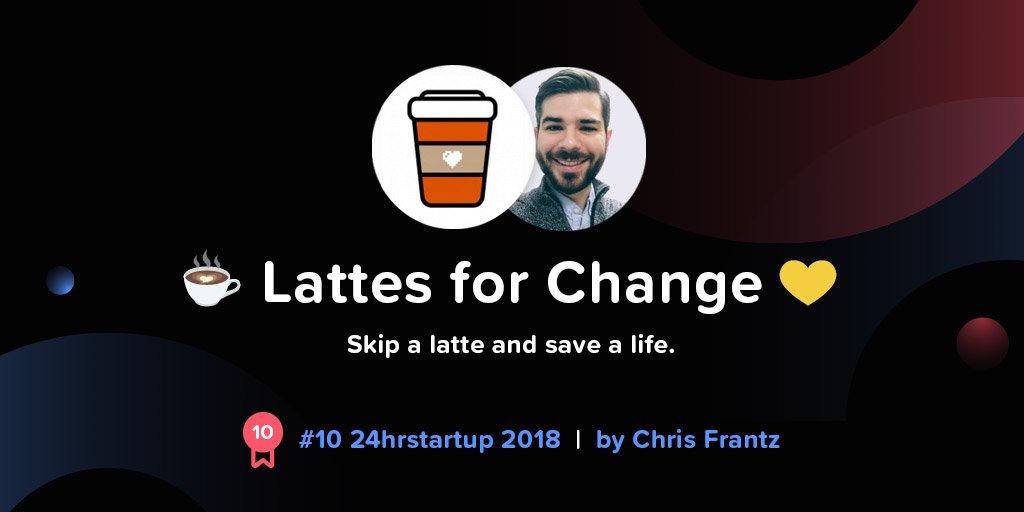https://t.co/24HOcHIEDl
Here are some resources you need as a designer/developer to work on your level of productivity.👨💻🍀
(Thread) 🧵👇
https://t.co/24HOcHIEDl
https://t.co/KNBH3i21vD
https://t.co/gPmFoPUtxq
https://t.co/UWTXzVYUaB
https://t.co/ETww1mxBOY
https://t.co/MUEyNSFa9r
https://t.co/RH5aHAIN15
https://t.co/S8Hsy9BVlK
https://t.co/fqrUCrSeAW
https://t.co/1FaUonu8XV
More from Software
Developer productivity, y'all. It is a three TRILLION dollar opportunity, per the stripe report.
Eng managers and directors, we have got to stop asking for "more headcount" and start treating this like the systems problem that it is. https://t.co/XJ0CkFdgiO

If you are getting barely more than 50% productivity out of your very expensive engineers, I can pretty much guarantee you cannot hire your way out of this resourcing issue. 😐
(the stripe report is here:
Say you've got a strategic initiative that 3 engineers to build and support it. Well, they're going to be swimming in the same muddy pipeline as everyone else at ~50%, so you're actually gotta source, hire and train 6, er make that 7 (gonna need another manager too now)...
...which actually understates the problem, because each person you add also adds friction and overhead to the system. Communication, coordination all get harder and processes get more complex and elaborate, etc.
So we could hire 7 people, or we could patch up our sociotechnical system to lose say only 25% productivity to tech debt, instead of 42%? 🤔
By my calculations, that would reclaim 3 engineers worth of capacity given a team of just 17-18 people.
Eng managers and directors, we have got to stop asking for "more headcount" and start treating this like the systems problem that it is. https://t.co/XJ0CkFdgiO

When people often have to spend weeks just to get a local development environment up, there is a lot to improve. \U0001f641
— Daniel Schildt (@autiomaa) December 20, 2020
If you are getting barely more than 50% productivity out of your very expensive engineers, I can pretty much guarantee you cannot hire your way out of this resourcing issue. 😐
(the stripe report is here:
Say you've got a strategic initiative that 3 engineers to build and support it. Well, they're going to be swimming in the same muddy pipeline as everyone else at ~50%, so you're actually gotta source, hire and train 6, er make that 7 (gonna need another manager too now)...
...which actually understates the problem, because each person you add also adds friction and overhead to the system. Communication, coordination all get harder and processes get more complex and elaborate, etc.
So we could hire 7 people, or we could patch up our sociotechnical system to lose say only 25% productivity to tech debt, instead of 42%? 🤔
By my calculations, that would reclaim 3 engineers worth of capacity given a team of just 17-18 people.
Kubernetes vs Serverless offerings
Why would you need Kubernetes when there are offerings like Vercel, Netlify, or AWS Lambda/Amplify that basically manage everything for you and offer even more?
Well, let's try to look at both approaches and draw our own conclusions!
🧵⏬
1️⃣ A quick look at Kubernetes
Kubernetes is a container orchestrator and thus needs containers to begin with. It's a paradigm shift to more traditional software development, where components are developed, and then deployed to bare metal machines or VMs.
There are additional steps now: Making sure your application is suited to be containerized (12-factor apps, I look at you: https://t.co/nuH4dmpUmf), containerizing the application, following some pretty well-proven standards, and then pushing the image to a registry.
After all that, you need to write specs which instruct Kubernetes what the desired state of your application is, and finally let Kubernetes do its work. It's certainly not a NoOps platform, as you'll still need people knowing what they do and how to handle Kubernetes.
⏬
2️⃣ A quick look at (some!) serverless offerings
The offer is pretty simple: You write the code, the platform handles everything else for you. It's basically leaning far to the NoOps side. There is not much to manage anymore.
Take your Next.js / Nuxt.js app, point the ...
Why would you need Kubernetes when there are offerings like Vercel, Netlify, or AWS Lambda/Amplify that basically manage everything for you and offer even more?
Well, let's try to look at both approaches and draw our own conclusions!
🧵⏬
1️⃣ A quick look at Kubernetes
Kubernetes is a container orchestrator and thus needs containers to begin with. It's a paradigm shift to more traditional software development, where components are developed, and then deployed to bare metal machines or VMs.
There are additional steps now: Making sure your application is suited to be containerized (12-factor apps, I look at you: https://t.co/nuH4dmpUmf), containerizing the application, following some pretty well-proven standards, and then pushing the image to a registry.
After all that, you need to write specs which instruct Kubernetes what the desired state of your application is, and finally let Kubernetes do its work. It's certainly not a NoOps platform, as you'll still need people knowing what they do and how to handle Kubernetes.
⏬
2️⃣ A quick look at (some!) serverless offerings
The offer is pretty simple: You write the code, the platform handles everything else for you. It's basically leaning far to the NoOps side. There is not much to manage anymore.
Take your Next.js / Nuxt.js app, point the ...
You May Also Like
And here they are...
THE WINNERS OF THE 24 HOUR STARTUP CHALLENGE
Remember, this money is just fun. If you launched a product (or even attempted a launch) - you did something worth MUCH more than $1,000.
#24hrstartup
The winners 👇
#10
Lattes For Change - Skip a latte and save a life.
https://t.co/M75RAirZzs
@frantzfries built a platform where you can see how skipping your morning latte could do for the world.
A great product for a great cause.
Congrats Chris on winning $250!

#9
Instaland - Create amazing landing pages for your followers.
https://t.co/5KkveJTAsy
A team project! @bpmct and @BaileyPumfleet built a tool for social media influencers to create simple "swipe up" landing pages for followers.
Really impressive for 24 hours. Congrats!

#8
SayHenlo - Chat without distractions
https://t.co/og0B7gmkW6
Built by @DaltonEdwards, it's a platform for combatting conversation overload. This product was also coded exclusively from an iPad 😲
Dalton is a beast. I'm so excited he placed in the top 10.

#7
CoderStory - Learn to code from developers across the globe!
https://t.co/86Ay6nF4AY
Built by @jesswallaceuk, the project is focused on highlighting the experience of developers and people learning to code.
I wish this existed when I learned to code! Congrats on $250!!

THE WINNERS OF THE 24 HOUR STARTUP CHALLENGE
Remember, this money is just fun. If you launched a product (or even attempted a launch) - you did something worth MUCH more than $1,000.
#24hrstartup
The winners 👇
#10
Lattes For Change - Skip a latte and save a life.
https://t.co/M75RAirZzs
@frantzfries built a platform where you can see how skipping your morning latte could do for the world.
A great product for a great cause.
Congrats Chris on winning $250!

#9
Instaland - Create amazing landing pages for your followers.
https://t.co/5KkveJTAsy
A team project! @bpmct and @BaileyPumfleet built a tool for social media influencers to create simple "swipe up" landing pages for followers.
Really impressive for 24 hours. Congrats!

#8
SayHenlo - Chat without distractions
https://t.co/og0B7gmkW6
Built by @DaltonEdwards, it's a platform for combatting conversation overload. This product was also coded exclusively from an iPad 😲
Dalton is a beast. I'm so excited he placed in the top 10.

#7
CoderStory - Learn to code from developers across the globe!
https://t.co/86Ay6nF4AY
Built by @jesswallaceuk, the project is focused on highlighting the experience of developers and people learning to code.
I wish this existed when I learned to code! Congrats on $250!!

Trading view scanner process -
1 - open trading view in your browser and select stock scanner in left corner down side .
2 - touch the percentage% gain change ( and u can see higest gainer of today)
3. Then, start with 6% gainer to 20% gainer and look charts of everyone in daily Timeframe . (For fno selection u can choose 1% to 4% )
4. Then manually select the stocks which are going to give all time high BO or 52 high BO or already given.
5. U can also select those stocks which are going to give range breakout or already given range BO
6 . If in 15 min chart📊 any stock sustaing near BO zone or after BO then select it on your watchlist
7 . Now next day if any stock show momentum u can take trade in it with RM
This looks very easy & simple but,
U will amazed to see it's result if you follow proper risk management.
I did 4x my capital by trading in only momentum stocks.
I will keep sharing such learning thread 🧵 for you 🙏💞🙏
Keep learning / keep sharing 🙏
@AdityaTodmal
1 - open trading view in your browser and select stock scanner in left corner down side .
2 - touch the percentage% gain change ( and u can see higest gainer of today)
Making thread \U0001f9f5 on trading view scanner by which you can select intraday and btst stocks .
— Vikrant (@Trading0secrets) October 22, 2021
In just few hours (Without any watchlist)
Some manual efforts u have to put on it.
Soon going to share the process with u whenever it will be ready .
"How's the josh?"guys \U0001f57a\U0001f3b7\U0001f483
3. Then, start with 6% gainer to 20% gainer and look charts of everyone in daily Timeframe . (For fno selection u can choose 1% to 4% )
4. Then manually select the stocks which are going to give all time high BO or 52 high BO or already given.
5. U can also select those stocks which are going to give range breakout or already given range BO
6 . If in 15 min chart📊 any stock sustaing near BO zone or after BO then select it on your watchlist
7 . Now next day if any stock show momentum u can take trade in it with RM
This looks very easy & simple but,
U will amazed to see it's result if you follow proper risk management.
I did 4x my capital by trading in only momentum stocks.
I will keep sharing such learning thread 🧵 for you 🙏💞🙏
Keep learning / keep sharing 🙏
@AdityaTodmal

























